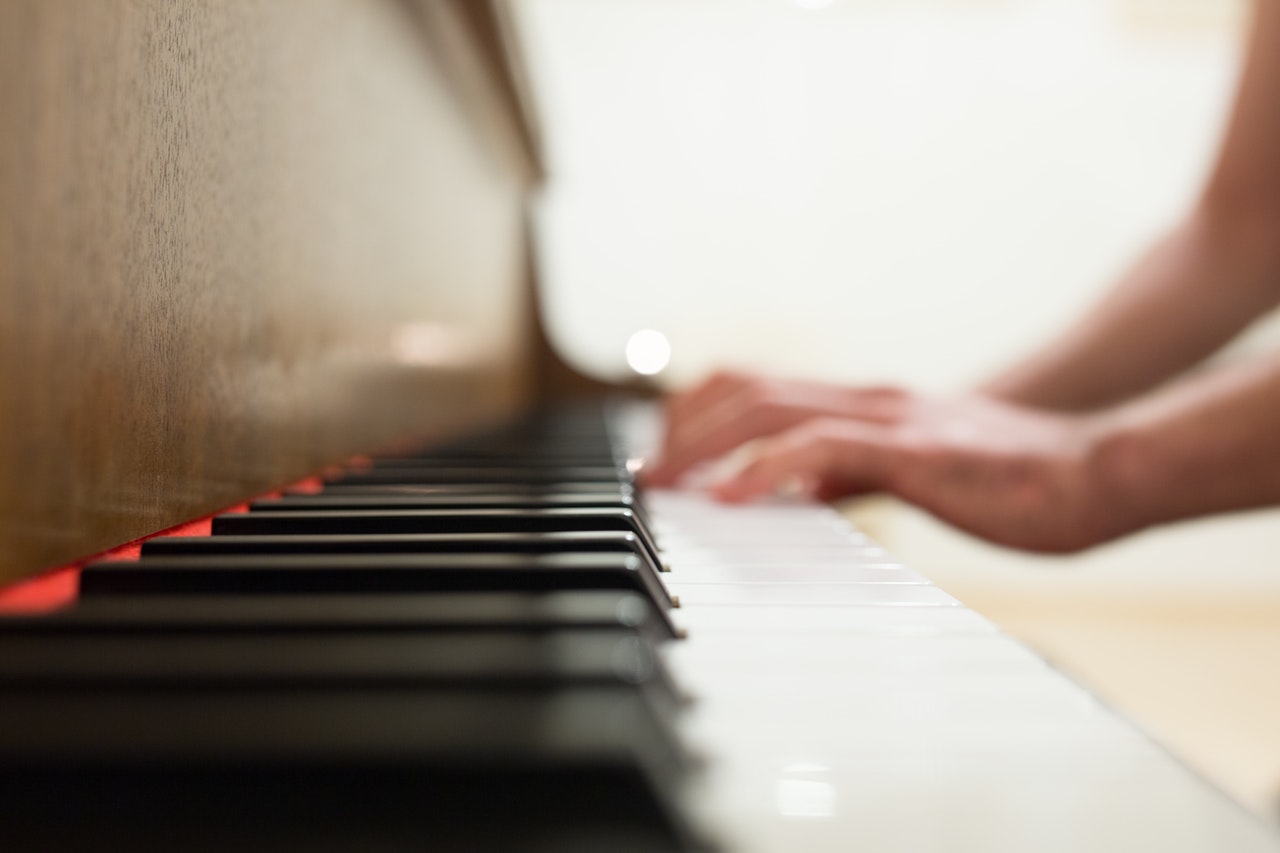Today we are going to talk about Slash Chords.
Typically, we play the root of a chord using the left hand to accompany the chord on the right hand. For instance, the C major chord (CEG) is played as follows:
Left-hand: C (root of the right-hand Cmaj chord)
Right-hand: C E G (Cmaj chord)
However, this sounds and looks quite basic, particularly when you choose to play a chord progression/song in this format throughout the entire progression or song.
A perfect example can be seen using the 2-5-1 chord progression in the key of C.
Dmin – Gmaj – Cmaj

Doing this is okay, but when played over and over it tends to come across as boring and simplistic to someone who may be looking to improve or diversify their sound. Instead, one may consider playing the same 2-5-1 progression as follows…

Notice the unique change in sound when you play the progression. It appears as though you did something big, but in reality, you didn’t. Here, we have replaced the “TRADITIONAL ROOT NOTE” on the left with an alternative note from the same chord. This was done for each chord in the chord progression. In musical terms, these chords are referred to as “SLASH CHORDS”.
What are Slash Chords?
Slash chords are basically triads with a bass note. Below, you will find an example of a typical slash cord.
C/E
The “C” (written on the left) indicates a C MAJOR CHORD played with your right-hand along with a bass note “E” (written on the right) played with your left-hand on the left-hand side of the keyboard. This may be confusing at first, however the more you read and interpret slash chords, the easier it will become to execute. Be sure to remember this format:
RIGHT-HAND CHORD / LEFT-HAND BASS = SLASH CHORD
Below you will find the written format of the 2-5-1 chord progression we played earlier, using slash chords (in key C).
DFA/F = 2 chord
GBD/B = 5 chord
CEG/E = 1 chord

Examining this closely, we actually chose the Major third (middle note) of each chord in their root position, and played each note as the BASS NOTE for each chord in the chord progression.
How can I create my own Slash Chords?
Creating slash chords is not as difficult as some may think. There are two basic concepts to remember whenever you attempt to create a slash chord:
- You may create slash chords from chord tones.
- You may create slash chords from non-chord tones.
Chord-tones refer to notes that belong to a particular chord. For example, saying “E” is a chord tone of the C major chord is correct because it’s a note in that particular C major chord (CEG). Furthermore, you can create a slash chord with that same CHORD TONE “E” by playing E as a bass note on the left hand while playing the C major chord on the right.
C/E OR CEG/E
On the contrary, playing slash chords using a NON-CHORD tone on the left hand (as a bass note) means you are creating a slash chord from non-chord tones. A perfect example of this is the Eb major chord over “C” bass note.
Eb/C OR Eb G Bb / C
Most of the time, the tendency is to call the BASS-NOTE of a NON-CHORD TONE slash chord the root of that chord. It’s much easier to remember that way. The Eb/C (non-chord tone slash chord) above can be easily referred to as the C minor 7th chord (C Eb G Bb).
A slash chord pattern you must not forget!
ROOT CHORD/THE MAJOR 3RD (Bass note)
This is the same chord-tone concept we used earlier when creating C/E OR CEG/E. Here, you will simply pick the major third of any major chord of your choice, and play it as the bass note on the left-hand. If you can commit this to memory, playing slash chords will never be a challenge to you.
Another example can be seen when we look at the F major triad (FAC). The major 3rd is A (the middle note in root position), therefore we play the A on the left-hand while playing the F major chord on the right-hand.
F/A OR FAC/A
Initially, you can put this into practice with all major triads as follows…
C major slash – C E G/E
C sharp major slash – C♯ E♯ G♯/ E♯
D major slash – D F♯ A/ F♯
E flat major slash – E♭ G B♭/ G
E major slash – E G♯ B/ G♯
F major slash – F A C/ A
F sharp major slash – F♯ A♯ C♯/ A♯
G major slash – G B D/B
A flat major slash – A♭ C E♭/C
A major slash – A C♯ E/ C♯
Bb major slash – B♭ D F/ D
B major slash – B D♯ F♯/ D♯
In addition, you can practice the same concept for the minor triads. Please note, that for the minor triads you will be picking the minor third note (No Major third note in a Minor triad).
Below you will find an example using the D minor chord.
The D minor chord is DFA and the “minor third” is F, therefore you will take that note and play it as the bass note.
DFA/F
Begin practicing these slash chords right away to improve your sound, however take care not to use it too frequently. There remains great value in creating a definite sound as well as slash cords.
For more lessons please visit TheMusicianTrainingCenter.com
-Joshua Okposo
MTC Contributor
